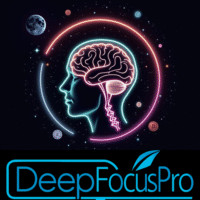Cognitive Energy Management: Redefining Productivity Beyond Time in 2026
We’ve always thought being productive meant managing time. We schedule everything, prioritize, and try to avoid distractions to get more done each day. But now that it’s almost 2026, those who work with their minds are realizing something important: just managing time isn’t enough anymore. What really matters now isn’t time itself, but how you use your brain.
You might work 8-10 hours a day, but you’re not at your best the entire time. Your focus, ability to decide, problem-solving, and creativity goes up and down during the day. That’s where managing your brainpower comes in. Instead of focusing on how many hours you work, it’s about using your mental energy in the best way to get the most out of your work when you need it.Productivity

Why Traditional Time Management Is Becoming Obsolete
For decades, productivity experts have focused on maximizing how we use our time. This approach worked well in industrial settings where output was directly proportional to hours worked. However, in today’s knowledge economy, the correlation between time and output has weakened considerably.
Research from the Stanford Productivity Research Institute shows that 76% of knowledge workers report feeling “time rich but energy poor” having sufficient hours in their workday but lacking the mental clarity and focus to use those hours effectively. This disconnect points to a fundamental flaw in traditional productivity systems.
The limitations of traditional time management include:
- Treating all hours as equally valuable (when cognitive capacity varies throughout the day)
- Focusing on quantity of work rather than quality of thinking
- Failing to account for mental fatigue and recovery needs
- Ignoring the biological reality of attention spans and energy cycles
- Overlooking the increasing cognitive demands of modern work
As Dr. Elena Mikhailov, neuroscientist and author of “The Cognitive Economy,” explains: “Time is democratic everyone gets the same 24 hours. But cognitive energy is not. How we generate, conserve, and direct our mental resources determines our true productivity in complex knowledge work.”
Understanding Cognitive Energy Management
Thinking about how to spend your brainpower during the day is what cognitive energy management is all about. Brainpower isn’t like time, which just keeps moving forward. Instead, it comes and goes depending on things like how well you sleep, what you eat, how stressed you are, and your body’s clock.

The Science Behind Cognitive Energy
Cognitive energy is based on well established principles of neuroscience.
Your brain, although it constitutes merely 2% of your total body weight, utilizes around 20% of your body’s energy.
This energy fuels a range of functions, from fundamental attention to intricate decision-making and innovative problem solving.
The prefrontal cortex of your brain, responsible for planning, decision making, and impulse control, consumes a significant amount of energy. According to experts, when this energy is depleted, cognitive fatigue sets in. As a result, your decision making may suffer, creativity may decline, and willpower may diminish.
Recent research conducted by the Cognitive Neuroscience Institute has identified three crucial factors that influence the energy levels of your brain:
Attentional Energy
Your capacity to focus on relevant information while filtering out distractions. This resource is particularly vulnerable to depletion through context switching and multitasking.
Executive Energy
Powers decision making, planning, and self regulation. Each decision you make draws from this limited pool, leading to the phenomenon known as “decision fatigue.”Productivity
Creative Energy
Enables innovative thinking, problem solving, and insight generation. This form of energy requires both focused attention and periods of diffuse, relaxed thinking.Productivity
Key Strategies for Optimizing Cognitive Energy
To manage your mental energy well, you gotta change how you think about your workday. Stop trying to cram everything in and start asking yourself, When am I sharpest, and what should I tackle then?Productivity
1. Align Work with Your Circadian Rhythm

Your brain’s alertness goes up and down during the day it’s just part of your body’s natural clock. By 2026, knowing your personal body clock is going to be key to getting stuff done.
For Morning Peak Individuals:
- Schedule analytical and decision heavy work before noon
- Use 9-11 AM for your most challenging cognitive tasks
- Save routine administrative work for afternoon energy dips
- Reserve creative brainstorming for late afternoon when inhibitory control relaxes
For Evening Peak Individuals:
- Begin with light organizational tasks in the morning
- Schedule critical thinking and complex problem solving for late afternoon
- Use evening hours for deep creative work and innovation
- Avoid scheduling high stakes meetings in the morning
2. Implement Deep Work Protocols
Deep work the ability to focus without distraction on cognitively demanding tasks is essential for high value knowledge production. In 2026, organizations are increasingly structuring workdays around deep work sessions rather than constant availability.

“The ability to perform deep work is becoming increasingly rare at exactly the same time it is becoming increasingly valuable in our economy. As a consequence, the few who cultivate this skill, and then make it the core of their working life, will thrive.”
— Cal Newport, author of “Deep Work”
Modern deep work protocols include:
- Time-blocking: Scheduling 90-120 minute uninterrupted sessions aligned with your energy peaks
- Attention anchoring: Using ritualized starting procedures to signal to your brain it’s time for focused work
- Digital minimalism: Temporarily eliminating all potential sources of distraction
- Energy-based scheduling: Using cognitive energy tracking to identify your optimal deep work windows
3. Master Energy Renewal Practices
Unlike machines, human brains aren’t designed for continuous output. Cognitive energy requires regular renewal through strategic breaks and recovery activities. The most effective knowledge workers in 2026 aren’t those who work the longest hours, but those who master the rhythm of exertion and renewal.

Micro Renewal Practices (1-5 minutes)
- Breathwork: 4-7-8 breathing technique to activate parasympathetic response
- Sensory shifts: Changing visual focus from screen to distance
- Physical reset: Brief movement to increase circulation
- Hydration: Water consumption to support optimal brain function
Macro-Renewal Practices (15-90 minutes)
- Nature exposure: Even brief contact with natural environments
- Social connection: Positive, low stakes social interaction
- Physical activity: Moderate exercise to boost BDNF production
- Cognitive switching: Engaging different brain regions through varied activities
Discover Your Personal Cognitive Energy Pattern
Understanding your unique cognitive energy profile is the first step toward optimized productivity. Our free Cognitive Energy Audit Toolkit helps you map your energy patterns and identify your peak performance windows.Download Free Energy Audit Toolkit
Technology Tools Supporting Cognitive Energy Management in 2026
The productivity technology landscape has evolved dramatically to support cognitive energy management. Today’s most effective tools go beyond simple time tracking to provide insights into your cognitive patterns and optimize your work accordingly.

Leading Cognitive Energy Management Applications
NeuroPace
Combines biometric data from wearables with work output metrics to identify your optimal cognitive states. The AI-powered system learns your patterns and automatically suggests task scheduling based on predicted energy levels.
AI-Powered Biometric Integration
FlowState
Uses machine learning to identify when you’re in a state of flow and automatically minimizes distractions during these periods. The system also helps you identify what conditions consistently lead to your highest-quality cognitive work.
Flow Optimization Distraction Blocking
CogniTrack
A comprehensive energy management platform that integrates with your existing productivity tools. It analyzes your work patterns, meeting schedules, and performance metrics to recommend optimal times for different types of cognitive work.
Workspace Integration Personalized Insights
Key Features of Modern Cognitive Energy Tools:
- Passive data collection that doesn’t create additional cognitive load
- Integration with calendar and task management systems
- Personalized recommendations based on your unique cognitive patterns
- Environmental factors tracking (light, noise, temperature) that affect cognition
- Team energy synchronization for optimal meeting scheduling
Case Studies: Cognitive Energy Management in Action
Organizations and individuals implementing cognitive energy management principles are seeing remarkable improvements in both productivity and wellbeing. Here are three examples from different sectors:
Quantum Ventures: 40% Increase in Strategic Output

This venture capital firm restructured their entire workweek around cognitive energy principles. They implemented:
- Deep work mornings with no meetings before 11 AM
- Energy based role assignment matching analytical tasks to team members’ peak hours
- Mandatory renewal periods between intensive cognitive sessions
- Quarterly “cognitive retreats” for strategic thinking and innovation
The result: Investment analysts reported a 40% increase in quality decision making and due diligence capacity, while reducing working hours by 15%.
Dr. Maya Chen: Research Breakthrough Through Energy Alignment
Dr. Chen, a leading medical researcher, struggled with balancing teaching responsibilities and complex research work. By implementing cognitive energy management, she:
- Identified her optimal creative thinking window (5-7 AM) and protected it for theoretical work
- Restructured teaching and administrative duties to align with energy dips
- Implemented strategic renewal practices between cognitive modes
- Used technology to track and optimize her energy patterns
Within six months, Dr. Chen completed a breakthrough research paper that had been stalled for years, while reporting significantly lower stress levels and improved work satisfaction.
Global Innovations: Company Wide Energy Management

This technology company implemented cognitive energy management across their 500 person organization:
- Energy-synchronized meeting scheduling based on team cognitive patterns
- Flexible work schedules aligned with individual chronotypes
- Cognitive load balancing across project teams
- Energy optimized physical and digital workspaces
The results were significant: 32% reduction in reported burnout, 28% improvement in project delivery timelines, and 45% increase in innovation output as measured by implemented new ideas.
Future Trends in Cognitive Energy Management
As we look toward the remainder of 2026 and beyond, several emerging trends are shaping the future of cognitive energy management:

Personalized Chronobiology
Advanced chronotype analysis is moving beyond simple “morning person/night owl” distinctions to identify micro patterns in cognitive function. Future systems will provide hour by hour recommendations customized to your unique neurological profile.
Cognitive Ergonomics
Workspace design is evolving to support different cognitive states. Adaptive environments that automatically adjust lighting, sound, temperature, and even oxygen levels based on the type of cognitive work being performed are becoming mainstream.
Team Energy Synchronization
Organizations are beginning to map collective cognitive energy patterns to optimize collaboration. Meeting scheduling algorithms now consider not just availability but cognitive compatibility ensuring teams connect when everyone is in an optimal state.
Neuroenergetic Nutrition
Personalized nutrition protocols designed specifically to support cognitive energy are gaining traction. These go beyond general “brain food” recommendations to provide individualized nutritional strategies based on your cognitive demands and metabolic profile.
Microlearning Integration
Learning platforms are now delivering content based on your current cognitive state. Complex material is presented during peak energy periods, while reinforcement and practice are scheduled during moderate energy states.
Recovery-Centered Culture
Leading organizations are shifting from celebrating overwork to prioritizing strategic recovery. Companies now track cognitive wellbeing alongside performance metrics, recognizing that sustainable energy management drives long term results.
Practical Steps to Implement Cognitive Energy Management Today
While some aspects of cognitive energy management involve advanced technology, you can begin implementing the core principles immediately with these practical steps:

1. Conduct a Personal Energy Audit
Before you can optimize your cognitive energy, you need to understand your current patterns:
- Track your energy, focus, and productivity levels every hour for at least five days
- Note what you were doing, environmental factors, and recent inputs (food, caffeine, etc.)
- Identify patterns in your peak and low energy periods
- Analyze which activities consistently energize or drain you
2. Restructure Your Calendar Based on Energy Patterns
Once you understand your patterns, align your work accordingly:
- Block your highest energy periods for your most demanding cognitive work
- Schedule routine, administrative tasks during predictable energy dips
- Build in intentional recovery periods between different types of cognitive work
- Experiment with different task sequences to find optimal cognitive transitions
3. Create Environment Triggers for Different Cognitive Modes
Your physical and digital environment significantly impacts your cognitive state:
- Designate specific physical spaces for different types of cognitive work
- Create digital environments (browser profiles, app configurations) for different cognitive modes
- Develop rituals that signal transitions between different types of thinking
- Minimize friction for entering your most valuable cognitive states
4. Build a Personal Renewal Practice
Sustainable cognitive energy requires intentional renewal:
- Identify activities that genuinely recharge your mental energy (not just entertainment)
- Schedule brief renewal activities between cognitive tasks
- Protect longer renewal periods (nature exposure, exercise, social connection) in your weekly schedule
- Practice cognitive boundaries to prevent unnecessary energy depletion
Transform Your Productivity with Cognitive Energy Management
Ready to move beyond traditional time management and optimize your cognitive performance? Our comprehensive 2026 Productivity Transformation Guide combines all the strategies in this article with personalized implementation tools.Get Your Free 14-Day Trial
Conclusion: The Future of Productivity Is Energy Centric

In 2026, it’s all about handling your mental energy, not just your schedule, to really nail things at work. If you figure out how your brain ticks, you’ll not only get work done quicker but also think sharper, get creative, and stay on top of your game without fizzling out.
The best workers and companies aren’t just squeezing more into their day. They’re learning to work smarter with their brains to bring their A game when it matters most. Think of it as teaming up with your brain’s natural flow, not fighting against it.
Give these tips a shot like timing work with your body’s clock, dialing in your focus, chilling out with breaks, and being smart with gadgets you’ll be ahead of the curve in upping your work game. The future? It belongs to those who intentionally create, protect, and spend their mental juice.
Frequently Asked Questions
How is cognitive energy management different from traditional time management?
Time management is about making the most of your schedule. But managing your mental energy is about knowing when you’re at your sharpest. So, you do tough tasks when you’re thinking clearly. Then, you save less intense work for when you’re not feeling as sharp. It’s not about packing more hours in, it’s about doing your best thinking when it counts most.
Can cognitive energy management work for people with irregular schedules?
Indeed, managing your mental energy can be extremely beneficial, particularly if you lack a consistent schedule. By understanding the flow of your energy, you can strategically plan when to tackle specific tasks, even amidst a chaotic timetable. The key is to recognize the connections between your activities, your environment, and your mental condition. Once you grasp this relationship, you can organize your tasks effectively, regardless of your working hours.
Do I need special technology to implement cognitive energy management?
Although specialized tools can improve your practice, the essential principles of cognitive energy management can be applied using simple tools such as a journal or spreadsheet. Begin by monitoring your energy, focus, and productivity levels during the day, while observing patterns and correlations. As you gain a better understanding of your cognitive patterns, you may opt to use more advanced tracking and optimization tools; however, these are not necessary to start reaping the benefits of this method.
In 2026, productivity is no longer about how many hours you work, but how you manage your mental energy. The world has shifted from time-based productivity to Cognitive Energy Management, a new paradigm that defines how people focus, recharge, and perform at their highest level in a fast-paced digital economy.
The New Face of Productivity
Traditional time management tools are failing us. Why? Because managing hours doesn’t equal managing energy. You can spend eight hours in front of a screen and still achieve nothing meaningful. The real productivity edge comes from understanding when your brain performs best, and aligning your most important tasks with those high energy hours.
In 2026, successful creators and professionals use tools and strategies that optimize focus, mental clarity, and recovery. This is what I call “Energy Productivity.” It’s not about doing more it’s about doing what matters most, when your mind is fully alive.
Cognitive Energy > Time Management
Think of your mind like a battery. It drains with distractions, multitasking, and digital overload and recharges through rest, mindfulness, and deep focus sessions.
Research shows that high performing individuals in 2026 prioritize mental recovery as much as output. That’s why “Cognitive Energy Management” is becoming one of the top trends in productivity and focus this year.
Practical Strategies for Energy Based Productivity
- Track your energy, not just your time. Use apps like Rise or Motion to monitor your focus patterns.
- Batch deep work. Work in focused 90-minute blocks, then recharge.
- Reduce decision fatigue. Automate small tasks to preserve mental energy for big goals.
- Integrate mindfulness. Meditation and digital detox aren’t luxuries they’re performance tools.
These micro habits help creators, freelancers, and entrepreneurs maximize their daily cognitive potential, leading to sustainable productivity not burnout.
Why This Matters in 2026
AI, automation, and hybrid work are reshaping how we measure performance. The winners of this new economy are not those who work more, but those who work smarter, calmer, and clearer. Managing your cognitive energy is the ultimate competitive advantage.
Ready to master your mind and redefine productivity in 2026?
Join the MINDS Movement where focus meets freedom.
Download your free Energy Productivity Blueprint today and start building your next-level workflow.
Q1: What is Cognitive Energy Management?
It’s the practice of optimizing your mental energy not just your time to achieve high performance results with less burnout.
Q2: How can I improve my energy productivity daily?
Start by identifying your high focus hours, minimize distractions, and add short recovery breaks between deep work sessions.
Q3: Why is this the future of work?
Because the future favors those who can stay focused, creative, and mentally balanced even in a world full of noise. https://www.youtube.com/watch?v=oO9GLC2iKy8 https://deepfocuspro.com/productivity-2/



